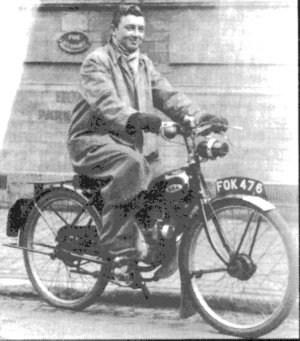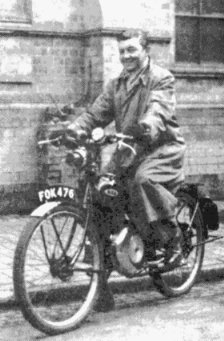 Go
to the Archive index
Go
to the Archive indexBSA did not have any production autocycles in its range. It did, however, get as far as producing a prototype. This machine is depicted in these two photographs.
 |
 |
As can be seen, BSA’s autocycle did not follow the standard practice of most other manufacturers. It does, however, bear a striking resemblence to the Levis-engined HEC Power Cycle: too much of a resemblence to be accidental. But the BSA is not simply a re-badged HEC. There are enough differences to show that BSA built this machine itself, but following the major design points of the HEC. The Levis and HEC engines are very similar: the layout is the same, the primary drive cases are the same shape and in the same position, the same style of flywheel magneto is used and both engines have the distinctive curved exhaust expansion chamber sweeping around the flywheel. Again, comparison of these expansion chambers shows that, although they look the same, they are different castings.
The frame is proportioned much more like a pedal cycle that the conventional Villiers-powered autocycle. The wheel base is shorter and the bottom bracket is in the correct position for pedalling. The curved down-tube can be seen in the pictures. The curvature creates extra space to accomodate the engine but it is also a feature found on some BSA pedal cycles and may have allowed the use of some common components. The petrol tank is like a motor cycle one and is obviously designed to conform to the BSA ‘house-style’.
What became of this machine? The mask on the headlamp and white patches on the mudguards show that these are war-time photographs. In fact, they were taken outside the BSA works in Armoury Road in 1940. Essential war work took up all of BSA’s efforts in the following years and the autocycle project was shelved. The prototypes have not survived. They were probably used by war workers at BSA’s works until something went wrong when, being prototypes, the lack of spares would mean they were consigned to the scrap heap.
BSA did produce another autocycle, but not under its own name. New Hudson was part of BSA’s cycle division and the New Hudson autocycle was the most popular example of the genre.
The next article in this series will describe the Commander autocycle.
First published - May 1998